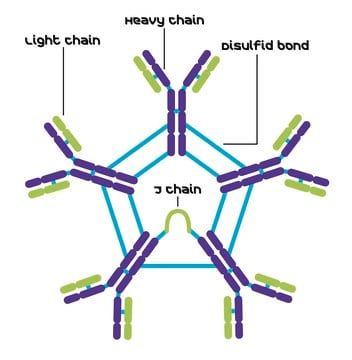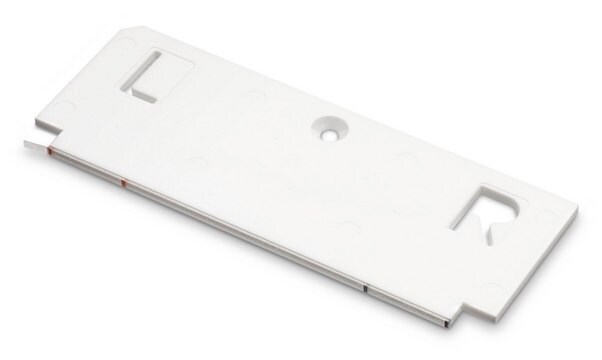MABC184
Anti-SDF-1 Antibody, clone K15C, Azide free
clone K15C, from mouse
Sinônimo(s):
Stromal cell-derived factor 1, SDF-1, hSDF-1, C-X-C motif chemokine 12, Intercrine reduced in hepatomas, IRH, hIRH, Pre-B cell growth-stimulating factor, PBSF
About This Item
Produtos recomendados
fonte biológica
mouse
Nível de qualidade
forma do anticorpo
purified immunoglobulin
tipo de produto de anticorpo
primary antibodies
clone
K15C, monoclonal
reatividade de espécies
mouse, human
técnica(s)
ELISA: suitable
immunohistochemistry: suitable
neutralization: suitable
western blot: suitable
Isotipo
IgG2aκ
nº de adesão NCBI
nº de adesão UniProt
Condições de expedição
wet ice
modificação pós-traducional do alvo
unmodified
Informações sobre genes
human ... CXCL12(6387)
Descrição geral
Especificidade
Imunogênio
Aplicação
Apoptosis & Cancer
Growth Factors & Receptors
Western Blotting Analysis: A representative lot from an independent laboratory detected SDF-1alpha, SDF-1beta, and SDF-IP10 chimera, but not IP-10, IL-8, MDC, MIP-1b, eotaxin, and RANTES in WB (Coulomb-L′Hermin, A., et al. (1999). Proc Natl Acad Sci USA. 96(15):8585-8590.).
ELISA Analysis: A representative lot from an independent laboratory detected SDF-1alpha, SDF-1beta, and SDF-IP10 chimera, but not IP-10, IL-8, MDC, MIP-1b, eotaxin, and RANTES in ELISA (Coulomb-L′Hermin, A., et al. (1999). Proc Natl Acad Sci USA. 96(15):8585-8590.).
Immunohistochemistry Analysis: A representative lot from an independent laboratory detected SDF-1 in human fetal liver, lung, and kidney tissues (Coulomb-L′Hermin, A., et al. (1999). Proc Natl Acad Sci USA. 96(15):8585-8590.).
Neutralization Analysis: A representative lot from an independent laboratory attenuates the increased growth of MCF-7-ras tumor development in the presence of CAFs, decreases angiogenesis, and reduced recruitment of EPCs in tumors (Orimo, A., et al. (2005). Cell. 121(3):335-348.).
Immunhistochemistry Analysis: A representative lot from an independent laboratory detected SDF-1 in epidermal Dendritic Cells (DC) in normal and autoimmune diseased skin tissue (Pablos, J. L., et al. (1999). Am J Pathol. 155(5):1577-1586.).
Immunohistochemistry Analysis: A representative lot from an independent laboratory detected SDF-1 in mucosal surfaces of small intestine tissue, rectal tissue, vaginal tissue, and endocervical tissue (Agace, W. W., et al. (2000). Curr Biol. 10(6):325-328.).
Immunohistochemistry Analysis: A representative lot from an independent laboratory detected SDF-1 in mouse bone marrow sections (Dar, A., et al (2005). Nat Immunol. Epub 2005.).
Qualidade
Western Blotting Analysis: 0.375 µg/mL of this antibody detected SDF-1 in 10 µg of HEPG2 cell lysate.
Descrição-alvo
forma física
Armazenamento e estabilidade
Handling Recommendations: Upon receipt and prior to removing the cap, centrifuge the vial and gently mix the solution. Aliquot into microcentrifuge tubes and store at -20°C. Avoid repeated freeze/thaw cycles, which may damage IgG and affect product performance.
Nota de análise
HEPG2 cell lysate
Outras notas
Exoneração de responsabilidade
Não está encontrando o produto certo?
Experimente o nosso Ferramenta de seleção de produtos.
Código de classe de armazenamento
12 - Non Combustible Liquids
Classe de risco de água (WGK)
WGK 2
Ponto de fulgor (°F)
Not applicable
Ponto de fulgor (°C)
Not applicable
Certificados de análise (COA)
Busque Certificados de análise (COA) digitando o Número do Lote do produto. Os números de lote e remessa podem ser encontrados no rótulo de um produto após a palavra “Lot” ou “Batch”.
Já possui este produto?
Encontre a documentação dos produtos que você adquiriu recentemente na biblioteca de documentos.
Artigos
The term neurodegeneration characterizes a chronic loss of neuronal structure and function leading to progressive mental impairments.
Nossa equipe de cientistas tem experiência em todas as áreas de pesquisa, incluindo Life Sciences, ciência de materiais, síntese química, cromatografia, química analítica e muitas outras.
Entre em contato com a assistência técnica








